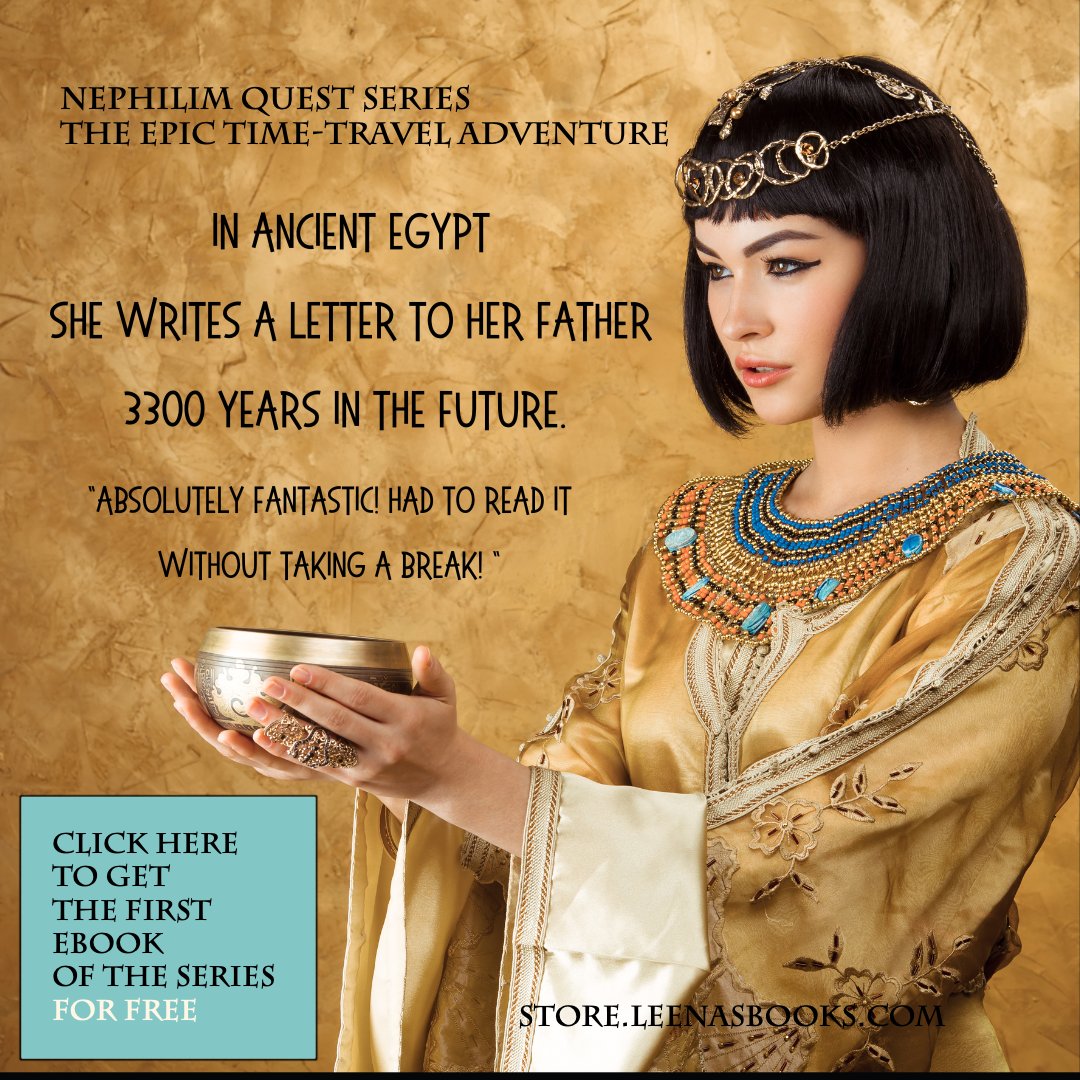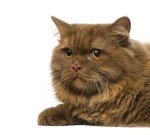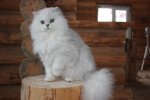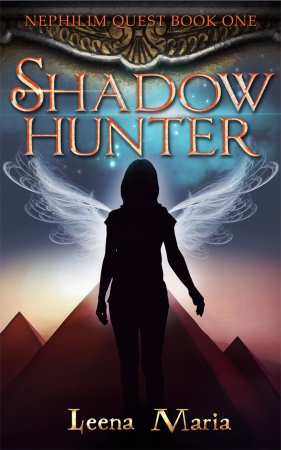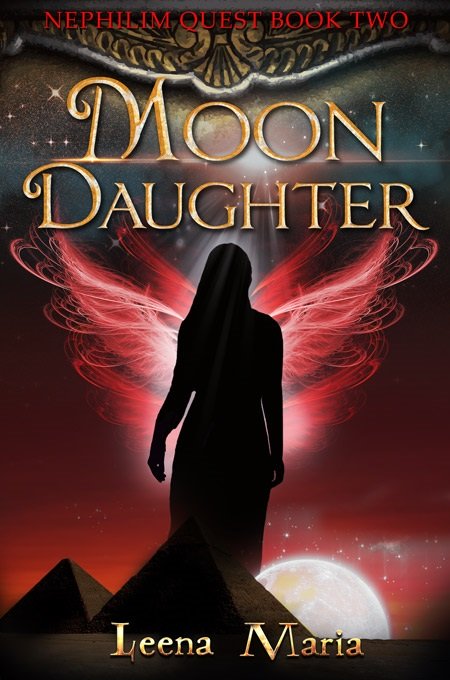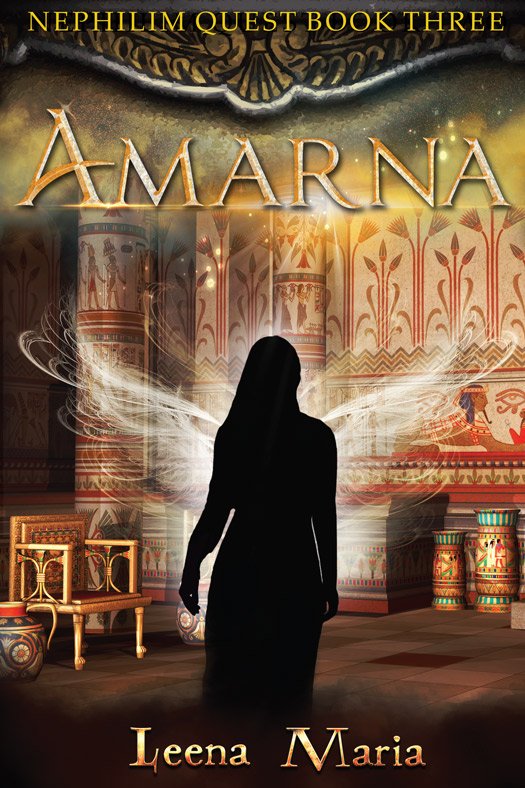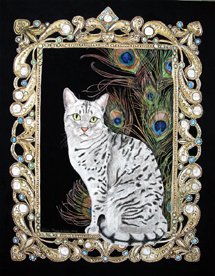Egyptian Mau Cat
Ancient History
You could say the Egyptian Mau Cat is a royal breed of cat - it was revered by the ancient Pharaohs, and saved by a modern Princess…
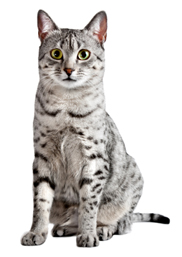 |
The Egyptian Mau cat is an ancient cat breed - and provenly so. Genetic studies were made by Dr Leslie A. Lyons in 2010 to define which group of cats in the world had the greatest genetic diversity. This was done because a group of cats with the greatest genetic diversity would be the oldest, and the research might reveal the origin of our domestic cats. The study showed that the oldest group of cats in the world were the feral cats of Egypt. |
Also another study in 2007 revealed that all of our domestic cats had their ancesty in Egypt - all domestic cats today have the same five female ancestors - yes, in Egypt. Also genetic studies have recently confirmed the fact that the Egyptian Mau cat breed did indeed originate in Egypt.
With this scientific proof in all likelihood the Egyptian Mau cat may be the oldest domesticated cat breed in the world.
Egyptian Mau Cat
in Ancient Egypt
The Nile made it possible for the ancient
Egyptians to start cultivating crops early on - the inundation of the Nile
brought fertile silt to the fields yearly, like clockwork. And crops of course
attracted vermin - rodents wanted their share too. They could destroy a crop
and cause famine - but luckily for people the African wild cat was around. In
all likelihood it was its sub species, Lybica Ocreata, that noticed the
abundance of prey in and around human settlements.
And the ancient Egyptians, of course, liked the cat because it helped to keep their food supply safer. So the people wanted to keep the cats around, and treated them well. And the rest is feline history…
It is easy to believe that Egyptian Mau Cat is a descendant of the subspecies of African wild cat - in the wild the spots
"break" the outline of the cat, making it hard to spot (pun intended)
from a distance - good for a hunter, and good if you are hunted.
Also in the shadows of any greenery the spots and lighter colored areas mimic well sunlingt seeping through foliage, camouflaging the cat.
Did Ancient Egyptians Teach Maus to Hunt?
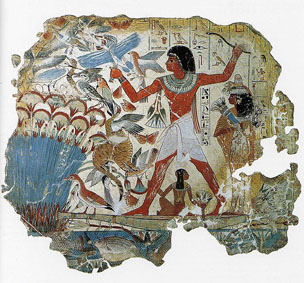 |
Many people, when writing about Maus, tell that the Egyptians taught their cats to hunt and fetch the prey (mainly birds). This misconception probably derives from the tomb paintings, one of the most familiar being a relief now in the British Museum, from the tomb of Nebamun. There a cat, very much like a bronze Egyptian Mau cat, catches a duck from the air. |
(Photo source: Wikipedia)
Now this may look like a real life event, but the fact is that Egyptians did not do art for art's sake - everything had a symbolic, religious meaning, especially within tombs. And so, looking at the tomb painting, we can read the following:
To the ancient Egyptian chaos, isfet, was an ever-present danger, and balance, ma' at, had to be actively sought. Hunting symbolized controlling the chaos of the world. Showing the tomb owner hunting gave him magical powers in the afterlife over chaos. Wildlife, and birds especially were thought to be symbols of chaos. And so, hunting them was a very popular scene in tombs.
The cat, on the other hand, was a solar animal, and a symbol of fertility. Fertility symbols were important, as they represented the tomb owner's birth into the afterlife. The cat is often shown sitting under the chair of the Lady of the House, and when you remember Egyptians considered fertility and a large number of children ever-important, you now understand why the cat sat under her chair. Egyptians had great respect for mothers, and wanted a big family, and the cat was also a great mother, and produced many litters during its lifetime.
The goddess Bastet, a daughter of Ra ("eye of Ra") was depicted as a female figure with a cat's head. The feline goddesses of ancient Egypt were fierce protectors of the Pharaoh, representing the sun's destructive power against the enemy. Also the sun god Ra was shown killing the threatening serpent Apep in paintings in tombs and in the "Book of the Dead" (or "Going Forth by Day as the Egyptians themselves called it, as the book in question adviced the deceased about the safe passage through the underworld into the light of the Field of Reeds where they would spend a happy eternal life). This gives even more symbolical depth to the cat paintings in tombs; fertility and protection.
|
The Mau's have a "scarab" formation on their forehead. Really, if you look closely, it looks exactly like the scarab beetle which as Kheperu-Ra was the symbol of the rising sun - another symbol of rebirth, and another reason for the Egyptians to revere their cats. A fierce protector, a symbol of fertility, with the symbol of the new sun on its forehead… You get the picture, I am sure. |
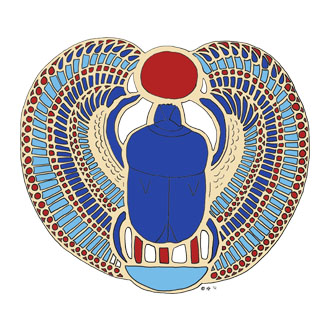 |
|
Here's a picture of Qetesh (whose portrait is on the lower right hand corner) to show you the Mau's "Scarab". You can really imagine the beetle there, can't you? It looks like the legs of the sacred beetle are reaching down towards the cat's eyes. Ancient Egyptians saw hidden meanings everywhere, so they certainly have paid attention to this. |
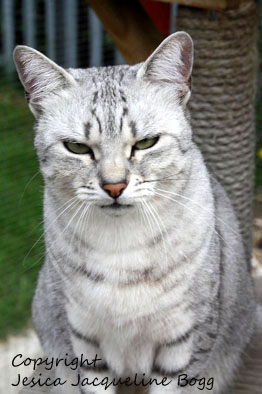 |
 |
Also it is said that the makeup of ancient Egyptian women imitated that of the cats. Well, as this kind of eye make up was used before first signs of domesticated cats appeared in ancient Egypt, I think there is another explanation. It is more likely to be an imitation of the hawk god Horus's "eye liner" (see photo, source: Wikipedia). |
The eye of Horus was an important religious symbol - when he fought Seth, the murderer and usurper of the crown of his father Osiris, Horus got his left eye pulled out. It was returned to him, and healed (the moon was seen as the eye of Horus, which vaned and appeared again). Also the eye cosmetics used had a healing function as they kept flies out of people's eyes, and in that respects eye makeup was also connected to Horus and the healing of eyes.
The word Mau is actually an ancient Egyptian word mw "miu", which can be translated as "she who mews".
Ta-Miu - a Cat Loved
by an Egyptian Prince
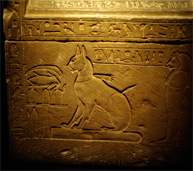 |
The first evidence of domestication of cats is from the New Kingdom era, 18th Dynasty around 1700-1500 B.C. From this era comes the first cat sarcophagus too. Prince Thumosis was the older brother of Akhenaten, already pronounced as the next king after his father Amenhotep III, but died prematurely. (photo courtesy of Ta Miu's sarcophagus: Wikipedia) |
He was a great cat lover, which we know from the said stone sarcophagus. He called his cat Ta-Miu ("she-cat"). The cat depicted on the sarcophagus looks a lot like Egyptian Mau. And he clearly believed for an afterlife for cats too.
Cat Worship in Ancient Egypt
After this, mummifying cats became a standard practise. The famous historian Herodotus (5th century BC) travelled to Egypt and wrote that it was the habit of people to shave their eyebrows in mourning when the family cat died. Well, while studying Egyptology I never met any other mention of this practice, and looking at what he wrote about Egypt ("Concerning Egypt" ), one can see there is a lot of "information" that is far from truth.
One is almost tempted to think that the fun-loving Egyptians pulled his leg a bit. But personally I thought this might be something else: Herodotus probably discussed a lot with Egyptian priests. And if he visited the temples of Bastet, he might indeed have connected the death of cats with shaving of eyebrows - namely the priests had to shave all their bodily hair while they were serving at the temple.
And at Bastet temples the mummification of cats had a more commercial function. Cats were not mummified as a sign of deep mourning, unfortunately. Instead they were bred for the purpose of killing them when a pilgrim was ready to pay for a cat mummy he could give as an offering to the goddess. A cat was then caught, its neck wrung, and then it was mummified. If this was done by the priests who had shaved their bodily hair, perhaps including the eyebrows, Herodotus might have written about this.
But all things considered this "cat worship" clearly was not always such a positive thing we tend to think in later times.
Also this killing cats on purpose does not fit well with Herodotus's story about how anyone killing a cat would be killed themselves.
Using Cats to Win a Battle
Another legend tells that the Persians won the battle of Pelysium in 525 BC against the Egyptian pharaoh Psammetik III by using cats. Knowing how the Egyptians revered cats and the goddess Bastet, the Persian Cambyses II had pictures of Bastet painted on the soldiers' shields. Another version tells he had living cats tied to the shields. Whatever the case, according to the story the Egyptians dared not shoot their arrows at the cats / goddess. And so the Persians conquered the city of Pelysium.
And now we move on to more recent Mau history and to the story how the Egyptian Mau cat was saved by a Russian Princess.
The Egyptian Mau cat photo on top of the page is copyrighted - if you wish to use it, purchase the rights to do so at
Back to Homepage from Egyptian Mau Cat
Back to Rare Cat Breeds from Egyptian Mau Cat
Thank you, Jesica Bogg for allowing me to use the photos of your beautiful Mau Qetesh in this article.
Leena's Books
Tutankhamun
|
This book travels with the King Tut - Treasures of the Golden Pharaoh exhibition on his world tour of ten cities from March 2018 onwards |
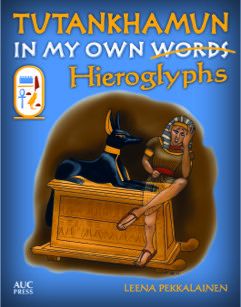 |
|
Tutankhamun: In My Own Hieroglyphs tells the story, for older children, of the life and afterlife of the famous young pharaoh in his own words. Tutankhamun tells us about the trouble he got into as a child in Akhenaten's palace in the new city of Akhetaten, and how he became a boy pharaoh. As we learn, his life changed a lot when he died as a teenager, and long years of boredom started in his tomb with only his pet monkey Fingers and his treasure for company. He did meet some of the Egyptian gods, of course, and had fun scaring off tomb robbers, but it was mostly rather dull. Then one day, some new and strange people, including a Mr. Howard Carter, arrived and began to take all the treasures out of his royal tomb. Fortunately, through the eyes of his beautiful golden mask, Tutankhamun, could have fun again traveling around the world |
Mr Mummific
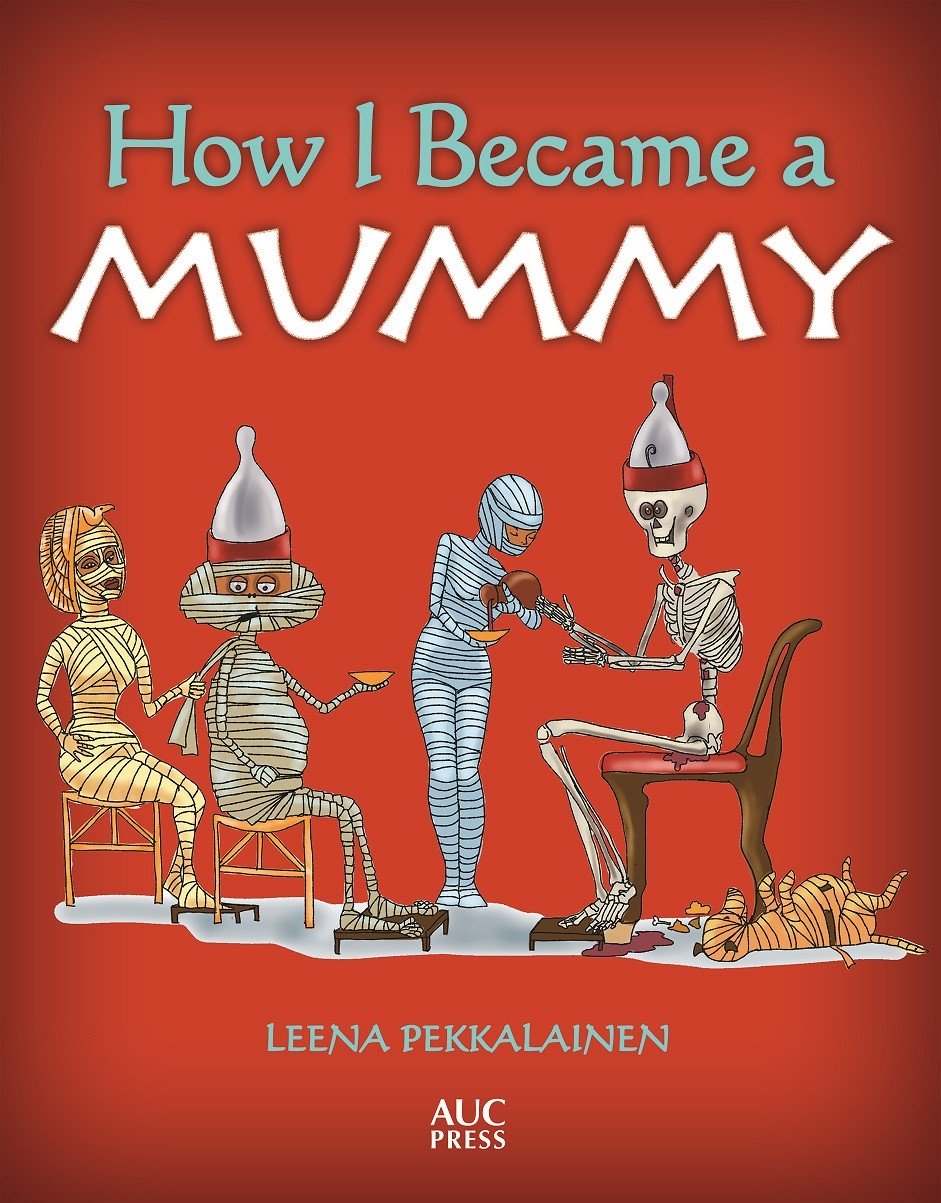
|
An ancient friend of mine, Mr Mummific dictated a book about how he became a mummy - and I was his scribe and artist. The book is available at Amazon.com and Amazon.co.uk On my other website www.ancientagypt101.com he continues his stories about life in ancient Egypt. |
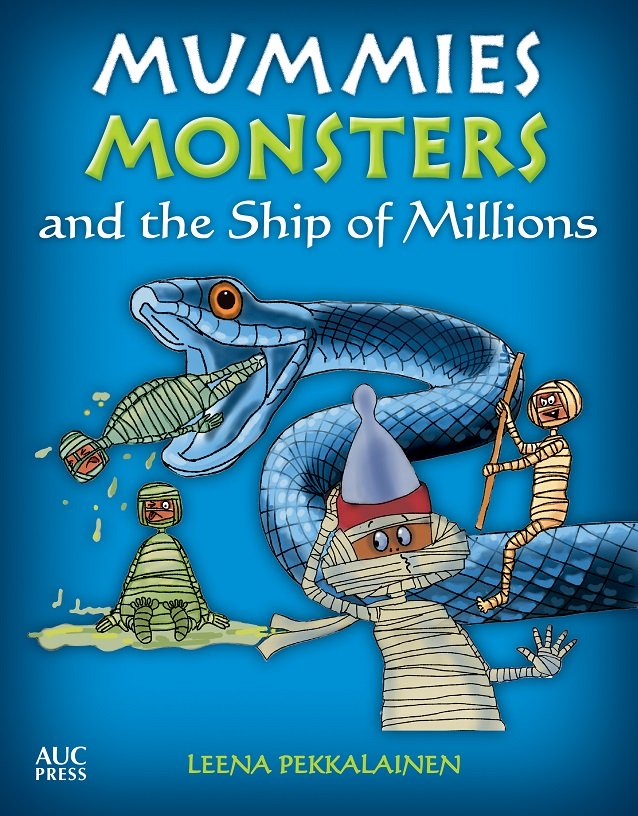
|
Another hilarious adventure for children with Mr Mummific, the mummy with attitude. He now tells the story of his mishaps, misunderstandings and misadventures as he leaves his tomb through the False Door to embark on the complicated and dangerous journey to the Afterlife aboard the magnificent Ship of Millions. Find the book at Amazon.com and Amazon.co.uk |
The Nephilim Quest Series
The first book in an epic fantasy series based on human mythology. The search for the mythical Watchers, the angels who fathered the Nephilim, the half-angels. A story that moves on three levels - our times, ancient Greece and ancient Egypt.
Preview Nephlim Quest 1: Shadowhunter online
***
My Author Website at leenasbooks.com
Above is a picture of a painting I have made of a beautiful silver Egyptian Mau Qetesh. If you wish to see the painting in more detail and read Qetesh's story, click on the picture or HERE.
Recent History of Egyptian Mau
cont
Are you owned by a beautiful Egyptian Mau? Click here to share photos and the story of your cat!
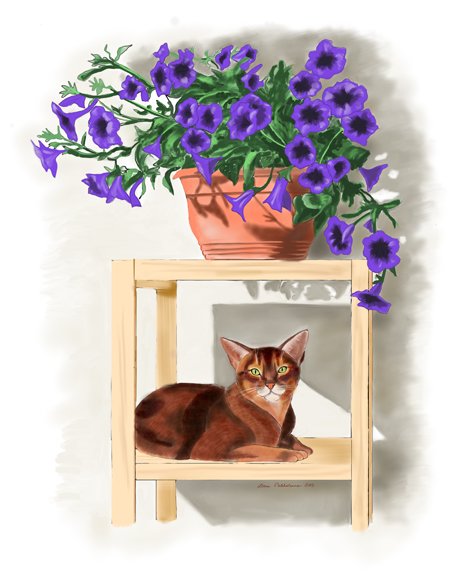
If you are looking for demanding coloring, check:
Online Coloring Books Magazine - No.1
It shows you step by step how to color this pretty Abyssinian cat with flowers. Each page has a color sample, and all the techniques are explained.
